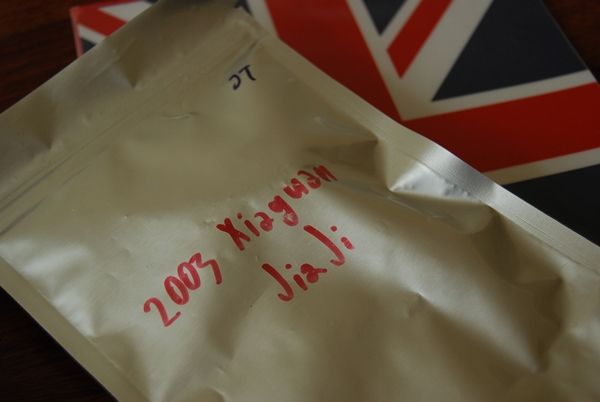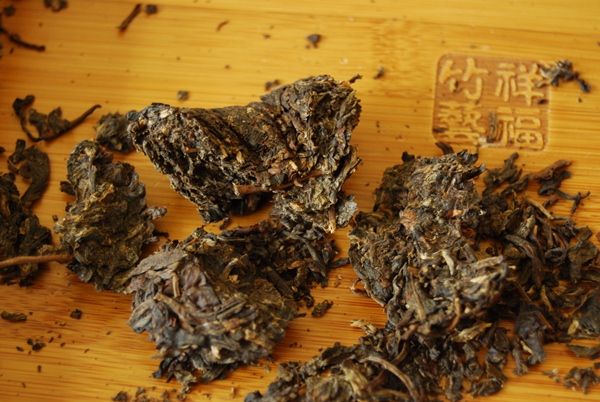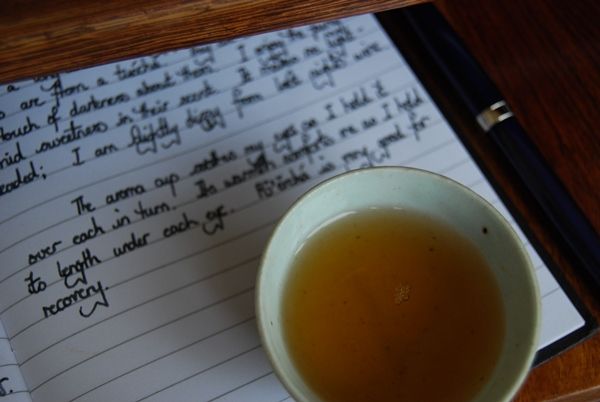One of my favourite Chinese books (which I can read only in translation) is Hongloumeng [hong-loh-mung], literally "Red Mansion Dream", but often translated as "Dream of the Red Chamber" or other variants. It is an 18th-century romantic story of life in a good Chinese family, with all of its intrigue, romance, and breadth-of-character. While it is true that translations often fail to capture the essence of an original text, the Penguin version ("Story of the Stone") and the official Beijing University Press version are both excellent, and each runs to four or five volumes. When we consider that the original Chinese text is contained in a single volume, it shows the necessary expansion that occurs when translating Chinese to English.
(Chinese is a very dense language, in which a few symbols can convey as much as a whole line of English. I think of n-ary encoding schemes: Chinese symbols have a high information density per symbol, and so, at the same symbol (baud) rate as English, manage a much bandwidth. I like to compare spoken Chinese to the QAM/QPSK communication of a modem. The information rate is high in Chinese, but it results in significantly increased likelihood of data corruption when individual symbols are parsed: witness a Chinese person trying to convey an abstract meaning in a small number of characters, where they often have to resort to adding additional context. "Your name is Lei? Like the flower? Or like thunder?" They often then draw the character on the hand for additional context. Chinese works perfectly, when written - spoken, it is a little more susceptible to the limits of information theory...)
So, Hongloumeng. One of the characters finds herself a little worse for wear, after consuming too much alcohol, and is prescribed some pu'ercha to remedy the situation. I wonder if this is partly responsible for the claim that pu'ercha is "good for fatigue and the effects of alcohol" which so often appears on neipiao [inner tickets] in bingcha.
It is something that often comes to mind on those (now reasonably rare occasions) when I find myself nursing a sore head in the morning, slumped over my tea-table, like the reprobate that I am. My dear wife is very forgiving.
The night before drinking this tea, I had been to a "farewell" dinner for the graduating year of engineering students (all six of them) at my old college. The senior engineering tutor was very generous in extending me an invitation; I think it's because I tend to lose to him at pool in the bar, in the small hours after formal events. To say that he is viciously competitive would be something of an understatement. He's charming, but he'll happily attempt to destroy you over any competitive game to hand. He's like a muscular, Australian version of Oddjob, crushing dice into powder using his bare hands.
The after-dinner conversation with the graduating students went long, in the common room afterwards, accompanied by unnumbered bottles of variously dodgy spirits. By the time they come to leave, the students and their two or three tutors tend to know each other very well; I'd taught them mathematics, and had some good fun doing so. Against tradition, some of them even managed first-class degrees. There wasn't a single "gentleman's third" in sight.
After all that liquid socialising, the tea-table seemed most welcoming. I headed over to a recent delivery from THE JAKUB, and came to settle on this Xiaguan "jiaji". Modern Xiaguan may taste like the wrong end of a spent cigar, but the older stuff (let's say pre-2006ish) can be very reliable. Like The Mighty Menghai, good old Xiaguan have collected a huge amount of blending expertise over the years. Older "XG" products are usually very reliable.
When the head is pounding, you look for reliability. Now is not the time for dodgy, insipid ladytea. It's time to take Hongloumeng's recommendation, and drink something that'll "do you right".
One of the charms of Xiaguan is its uncompromising nature. You can't separate the leaves from the superdense fusion that is the tuocha compression? Perhaps you'd like to go back to your tieguanyin, mademoiselle. Xiaguan tuocha redefines what it means to cram matter into small volumes. I remain convinced that, if the 16+ dimensions of superstring theory are to be found, the core of a Xiaguan tuocha would be a sensible place to begin the search: where matter is do dense, that the dimensions have collapsed in on themselves, into a latent subdimension of unknowable density.
Looking at the photograph of the nuggety fusion of this "jiaji" [top grade] tuocha, I can almost see those hidden dimensions, nestled between the compressed leaves. The leaves, typically, are tiny. I enjoy the humid sweetness that manages to escape the gravity-warping field of the leaves.
The aroma cup soothes my eyes as I hold it over each in turn. Its warmth comforts me as I hold its length under each eye. Pu'ercha is very good for recovery.
This 2003 version brews a proper orange, as pictured above, and you will be expecting to read that it has a strong, pinewood-like body. Its long sweetness burrows through my muddy, turbid mind, bringing me a small quantum of peace. Peace, that is, until the beeps of the washing machine arriving at the end of its cycle pierce my ears at an ironically amusing time. On the inside, I scream.
Xiaguan potency marches on for many infusions: it doesn't change very much, not developing anything other than robust, heavy sweetness, but that's what we've come to appreciate. You don't drink Xiaguan tuocha for its complex floral femininity. You drink it to have your throat and mind scoured clean of all evils. It is a rite of purification.
Love your Xiaguan. It'll take care of you, when you need it most.




11 comments:
My first puerh experience was with Xiaguan tuocha in Singapore.I was purchasing tuos for less than a dollar back then.
As with everything, it pays to be cautious! There are some howlingly bad Xiaguan tuocha out there; indeed, one of the worst puer'cha that I have ever encountered was sold a Xiaguan export tuocha sold for a Euro or two.
However, there can be some really stonking examples to be had for very little outlay. I still have tons of tubes of early-2000s tuocha from a lucky find in Maliandao some years back. Don't rule anything out!
Toodlepip,
Hobbes
Hello Hobbes, this is such a fantastic post! For some time now I've been thinking about sending you some puerh I purchased while studying abroad in Yunnan a few years ago. This gesture would serve both as a modest token of my appreciation for years of information and joy your blog has provided, and also of course to get your much respected opinion on the tea. This would require your sending a near complete stranger your mailing address (we could exchange e-mail addresses so not to put it on the web). I would certainly understand any reluctance on your part, but let me know if you are at all interested. Thanks again for such a great blog!
Justin
Dear Justin,
Thanks for the offer - perhaps we can arrange an exchange of samples! If you'd care to e-mail me (hobbesoxon at gmail), then we can swap addresses.
All the best,
Hobbes
Thanks to you, Hobbes, I just spent a bit of the evening reading about information gain across different languages.
Mark from Language Log applies a naive but interesting technique to look at byte lengths of parallel corpora before and after compression (the compression bit is an elegant hack at estimating entropy per language).
While this technique is very encoding-dependent (are you measuring bytes of unicode? counting strokes of pen on paper? syllables spoken?), it seems to back up your feeling.
Dear Nicolaus,
The notion of examining archive-lengths sounds silly for comparing data, but it is used surprisingly often. The concept of information encoding is defined using a general-purpose Turing machine, and determining the minimum encoding length for a given set of data is typically an intractable task. So, the length of archived data-files is often taken as a proxy, albeit a slightly odd one, at face value. You'd be surprised how often this is done in the information sciences!
All the best,
Hobbes
See that? A tea fueled that scholar!
Do have a book on language that I really need to get around to reading. Do that after I finish the Indian history survey through the lens of religion. Which I'm reading, chapter by chapter, between long bursts of wholesale paranormal romance novel consumption...
Hehe, I'm not quite surprised -- you're kinda preaching to the choir =).
My day job, aside from drinking tea, is toiling in the salt mines of machine learning and NLP at Google.
The problem with measuring archived data file length is that it's applying a general compression technique (meant to work on images, music, data files, text, what have you) into a very specialized domain. It's, like you say, a pretty good proxy.
To get a more accurate result, I'd probaby build a probability model that estimates P(word | surrounding words) and looks at its predictive power. You could also do this at the character or letter level.
At least with spoken language, I'd expect all languages to have roughly the same amount of information encoded per second--all languages are shaped by two forces: the need to unambiguously communicate meaning to a listener, and the desire for the speaker to waste as little energy as possible in communicating.
On the morphosyntactic level, languages that are more strict in morphology are going to allow more flexibility in word order (think German vs English). And in phonology, you can see that while Chinese encodes information in tones, there's a significantly reduced set of what sounds can follow what other sounds.
Written text though -- especially what you read in a novel, is a lot more artificial. While I bet spoken text has roughly the same entropy across languages, I'd not be surprised if written text has a lot more variance.
And with that, we've wandered far, far from the topic of your blog. To bring it back, what's in your cup today? Mine's a 2006 下关 8653 =).
Dear Shah,
One of my favourite books on language, which is just a good old-fashioned "excellent read" is History of the English Language, by Barnett.
A great book on the more technical aspects of information theory is that by Prof. Mackay: Information Theory, Inference, and Learning Algorithms, which, despite being a course textbook at The Other Place, is a really good read in its own right.
Toodlepip,
Hobbes
P.s. Mackay's book is free to download in .pdf format.
Dear Nicolaus,
ML at Google is very definitely within the same choir, probably within the same section of the choir. :)
Do you not think it possible that some languages have a lower information rate when spoken than others? Chinese is certainly very ambiguous when spoken, and so has high relative entropy. You'd need a fairly wide joint distribution to capture it compared to, say, machine code or English!
I will defer to the collected expertise of Googlites when it comes to proclamations concerning the modelling of natural language, however, given that it is your daily bread, and rather tangential to my own ML fields ;)
Teawise - today was a revisitation of my old Muyechun 002. It cost around $10 in 2007, and looks to cost around the same now. It has, also, aged really rather nicely, and I should quickly buy a tong before I write about it to avoid the usual difficulties!
You can't go wrong with Xiaguan 8653.
Toodlepip,
Hobbes
Post a Comment